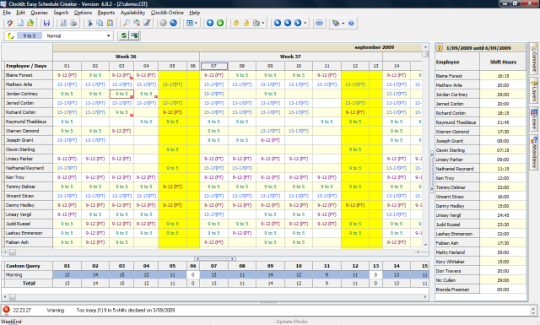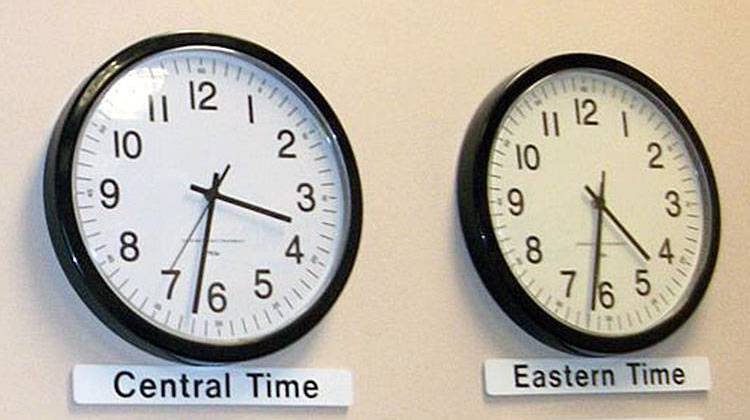
October 2022, was the last CDT in Mexico, as they abolished DST. daylight time schedule effective in 2010. In December 2009, the Mexican Congress allowed ten border cities, eight of which are in states that observe Central Time, to adopt the U.S. Mexico decided not to go along with this change and observes their horario de verano from the first Sunday in April to the last Sunday in October.

In those areas of the Canadian and American time zones that observe DST, beginning in 2007, the local time changes at 02:00 local standard time to 03:00 local daylight time on the second Sunday in March and returns at 02:00 local daylight time to 01:00 local standard time on the first Sunday in November. The only exception is the region immediately surrounding the Saskatchewan side of the bi-provincial city of Lloydminster, which has chosen to use Mountain Time with DST, synchronizing its clocks with those of Alberta. The province elected to move onto "permanent" daylight saving by being part of the Central Time Zone. One reason for Saskatchewan's lack of a time change is that the 105th meridian of longitude, the start point for the Mountain Time Zone, divides the province into approximately equal portions. In Canada, Saskatchewan does not observe a time change.

The modified time is called "Central Daylight Time" (CDT) and is UTC−05:00. For other uses, see Central Daylight Time (disambiguation).ĭaylight saving time (DST) is in effect in much of the Central time zone between mid-March and early November. Both Easter Island and Salas y Gómez Island in Chile uses Central Standard Time during the Southern Hemisphere winter and Central Daylight Time during the Southern Hemisphere summer the remainder of Chile uses Atlantic Standard Time and Atlantic Daylight Time. The Galápagos Islands in Ecuador uses Central Standard Time all year-round the remainder of Ecuador uses Eastern Standard Time. Nayarit – *only the municipality of Bahía de Banderas, rest of the state uses Mountain Timeīelize, Costa Rica, El Salvador, Guatemala, Honduras, and Nicaragua all use Central Standard Time year-round.Įastern Pacific islands and other areas.Colima – except for the Revillagigedo Islands, in which the inner islands use Mountain Time and the outer island uses Pacific Time.This is reportedly because most people who interact with the town reside in either New Mexico or Colorado. Īlthough legally located within the Central Time Zone, Kenton, Oklahoma-located to the adjacent east of the defined border of the Central and Mountain time zones (at the Oklahoma− New Mexico state line)-unofficially observes Mountain Time. This is due to their close proximity to Columbus, Georgia, which is on Eastern Time. Tennessee: West Tennessee and Middle Tennessee, including the major cities of Nashville and MemphisĪdditionally, Phenix City, Alabama, and several nearby communities in Russell County, Alabama, unofficially observe Eastern Time.Michigan: Gogebic, Iron, Dickinson, and Menominee counties.Kentucky: the western portion of the state, including the metropolitan area of Bowling Green.Indiana: northwest ( Gary) and southwest ( Evansville) regions.Florida: most of Florida Panhandle west of the Apalachicola River Franklin County west of the Apalachicola River and parts of Gulf County are in the Central Time Zone.Texas: all except for El Paso, Hudspeth, and northwestern Culberson countiesįive states are split between the Central Time Zone and the Eastern Time Zone:.


The following Canadian provinces and territories observe Central Time in the areas noted, while their other areas observe Eastern Time: The province of Manitoba is the only province or territory in Canada that observes Central Time in all areas.


 0 kommentar(er)
0 kommentar(er)
